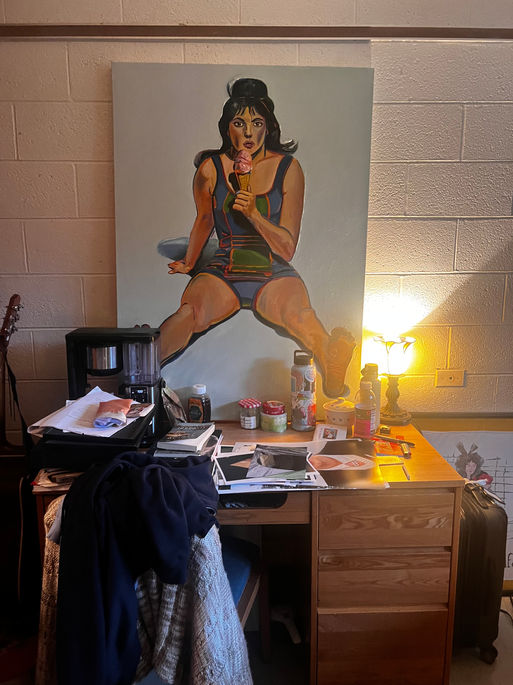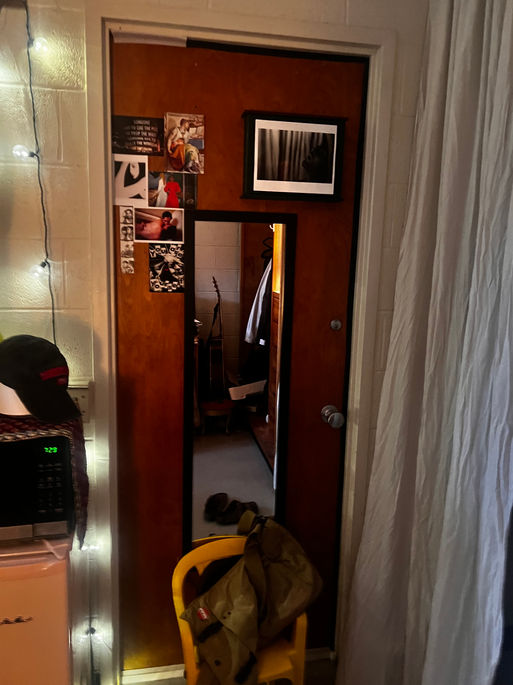
Vansh
Vansh describes his room as his home on campus. “This is the one room on campus where you are allowed to have your own things, and your own agency. Growing up, for half of my childhood, I didn’t have my own room. Since I have, I have wanted my space to be an extension, and expression, of myself.” Vansh's dorm room serves as a deeply personal sanctuary. His upbringing has given him a strong appreciation for the autonomy afforded by his dormitory. Vansh thus decided to elevate the space with furniture to make it feel more like a room in a house. For example, he added curtains to separate the entryway (fig. 1), and a nightstand he refurbished over the summer (fig. 2). “The curtains also make it feel like an art studio, which I like,” he said.
Vansh has a large collection of CDs, paintings, and photographs on his bookshelf (fig. 2). Vansh is an art studio major with an interest in curation, and has a keen eye. “The room is a narrative of myself, at the moment,” he explained. “All of the things I’ve listened to, made, worn. It’s a cumulative experience.” Vansh approaches his room as a canvas, meticulously arranging each item to narrate his personal journey. The room evolved as the year went on. For example, he added a painting that he made in class above his desk (fig. 3). He also created a bar cart with glasses he got at his job at the historical society (fig. 2). These design elements reflect his work experiences and the satisfaction he derives from them, as well as matching his sophisticated aesthetic.
Vansh hoped to create a playful space with lots of color, haphazardly placing art around to create a “deliberate effortlessness.” The art in his room also connects Vansh to his roots. He has postcards that he thrifted in Delaware with friends on the door (fig. 4) and paintings in a traditional Mughal style of line work. This style of painting reminds him of his childhood in India before immigrating to America. He also has Indian deities given to him by his mother for protection (fig. 4). Vansh's room serves as a conduit for cultural connection and nostalgia, bridging his present reality with his roots in India and life in Delaware.



